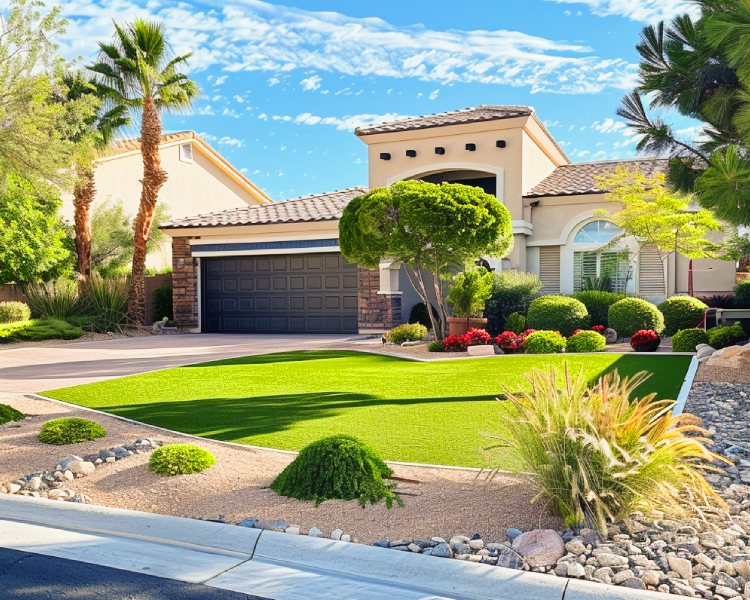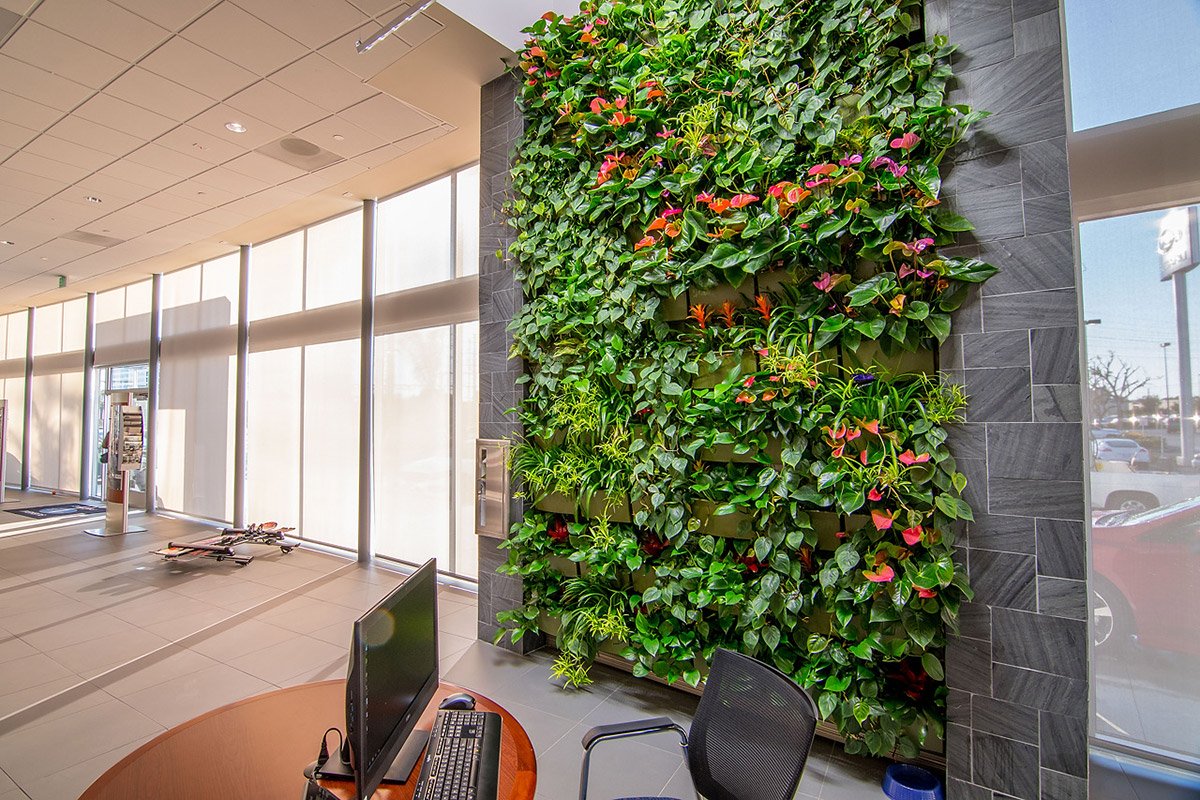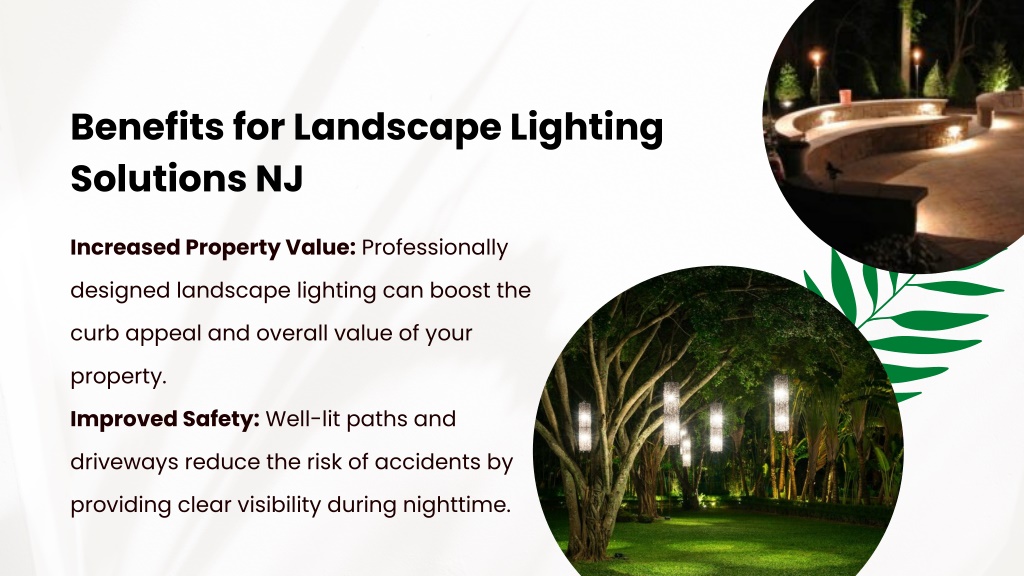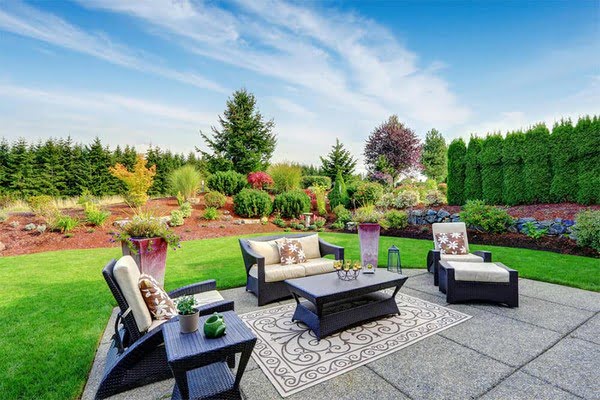Creating Your Sanctuary: A Comprehensive Guide to Designing a Restorative Outdoor Area
In today’s fast-paced world, the need for tranquility and a space to reconnect with nature is more crucial than ever. We are constantly bombarded with information, deadlines, and social pressures, leaving us feeling drained and disconnected. Designing a restorative outdoor area offers a powerful antidote to this modern-day stress. It provides a haven where you can escape the chaos, recharge your batteries, and find solace in the beauty of the natural world. This comprehensive guide will walk you through every step of designing your own personal sanctuary, transforming your outdoor space into a place of healing and rejuvenation.
Understanding the Essence of a Restorative Outdoor Area
Before diving into the practical aspects of design, it’s essential to understand what truly makes an outdoor area restorative. It’s not just about pretty plants and comfortable furniture; it’s about creating an environment that actively promotes well-being. This involves considering several key elements:
- Nature and Natural Elements: The presence of natural elements like plants, water features, and sunlight is paramount. These elements have a profound impact on our mental and physical health, reducing stress hormones and promoting feelings of calm.
- Sensory Experiences: A restorative space engages all the senses. Think about the sounds of birds chirping, the scent of blooming flowers, the feel of soft grass under your feet, and the visual beauty of a well-designed landscape.
- Privacy and Seclusion: Creating a sense of privacy and seclusion is crucial. This can be achieved through strategically placed plants, fences, or other architectural elements. A feeling of being sheltered allows you to relax and feel safe.
- Comfort and Functionality: The space should be comfortable and functional, with comfortable seating, shade from the sun, and easy access to amenities like water and electricity.
- Personalization: The most restorative spaces are those that reflect your personality and preferences. Incorporate elements that bring you joy and make you feel connected to the space.
Planning Your Restorative Outdoor Area: A Step-by-Step Guide
Designing a restorative outdoor area requires careful planning and consideration. Here’s a step-by-step guide to help you through the process:
1. Assessment and Goal Setting
The first step is to assess your existing outdoor space. Consider the following:
- Size and Shape: How large is your space? What is its shape? This will influence the overall design and the types of elements you can incorporate.
- Sunlight and Shade: How much sunlight does your space receive throughout the day? Where are the shady areas? This will impact the types of plants you can grow and the placement of seating areas.
- Existing Features: Are there any existing features, such as trees, patios, or decks, that you want to incorporate into your design?
- Views and Privacy: What are the views from your space? Do you need to create privacy from neighbors or the street?
- Climate and Microclimate: Consider your local climate and microclimate (the specific conditions within your space). This will influence plant selection and the need for shade or wind protection.
Next, define your goals for the space. What do you want to achieve? Do you want a place to relax, entertain, garden, or all of the above? Your goals will guide your design decisions.
2. Conceptual Design and Layout
Once you have a clear understanding of your space and your goals, it’s time to start conceptualizing your design. This involves creating a basic layout and choosing key elements.
- Sketching and Planning: Start by sketching out your space. Consider different layout options and experiment with the placement of key elements like seating areas, pathways, water features, and planting beds. You can use graph paper, online design tools, or hire a landscape designer to help you with this process.
- Zoning the Space: Divide your space into different zones based on their intended use. For example, you might have a relaxation zone with comfortable seating, a dining zone with a table and chairs, and a gardening zone with raised beds or a small greenhouse.
- Choosing a Style: Consider the overall style you want to achieve. Do you prefer a minimalist, modern look, a rustic, natural aesthetic, or a more traditional garden style? Your style will influence your choice of materials, plants, and furniture.
- Pathway Design: Plan pathways that connect different zones and provide easy access throughout the space. Consider the materials for your pathways, such as gravel, pavers, or stepping stones.
3. Plant Selection and Landscaping
Plants are the heart of a restorative outdoor area. They provide visual beauty, create a sense of tranquility, and attract beneficial wildlife. Choosing the right plants is crucial for creating a thriving and sustainable space.
- Consider Your Climate and Microclimate: Select plants that are well-suited to your local climate and the specific conditions within your space. Consider factors like sunlight, shade, soil type, and water availability.
- Choose a Variety of Plants: Incorporate a variety of plants with different textures, colors, and blooming times to create visual interest throughout the year. Include trees, shrubs, perennials, annuals, and groundcovers.
- Prioritize Native Plants: Native plants are adapted to your local environment and require less maintenance than non-native plants. They also provide essential habitat for local wildlife.
- Create Layers and Depth: Use a layered approach to planting, with trees and shrubs providing structure, mid-sized plants adding texture, and groundcovers filling in the spaces.
- Incorporate Sensory Plants: Include plants with fragrant flowers, interesting foliage, and tactile qualities to engage the senses. Consider herbs like lavender and rosemary, which have calming properties.
- Consider Maintenance Needs: Choose plants that are relatively low-maintenance and require minimal pruning, watering, and fertilization.
4. Incorporating Water Features
Water features can significantly enhance the restorative qualities of your outdoor area. The sound of flowing water has a calming effect, and water features can also attract birds and other wildlife.
- Types of Water Features: Consider different types of water features, such as ponds, fountains, waterfalls, and bird baths.
- Placement and Size: Choose a location for your water feature that is both visually appealing and functional. Consider the size of the water feature in relation to your overall space.
- Safety Considerations: If you have children or pets, take safety precautions, such as installing a fence around a pond.
- Maintenance: Water features require regular maintenance, such as cleaning and water level checks.
5. Choosing Furniture and Accessories
Furniture and accessories complete the look and feel of your restorative outdoor area. Choose pieces that are comfortable, durable, and aesthetically pleasing.
- Comfortable Seating: Invest in comfortable seating, such as lounge chairs, sofas, and hammocks. Consider the materials, such as weather-resistant fabrics and durable frames.
- Shade and Shelter: Provide shade from the sun with umbrellas, pergolas, or shade sails. Consider a covered structure for protection from the elements.
- Lighting: Install outdoor lighting to create a warm and inviting atmosphere in the evening. Consider solar-powered lights for energy efficiency.
- Accessories: Add accessories like cushions, throws, outdoor rugs, and decorative planters to personalize your space and add visual interest.
- Durability and Weather Resistance: Choose furniture and accessories that are designed to withstand the elements and require minimal maintenance.
6. Creating Privacy and Seclusion
Privacy is essential for creating a truly restorative outdoor area. It allows you to relax and feel safe from the outside world.
- Fences and Walls: Install fences or walls to create a physical barrier and provide privacy.
- Planting Screens: Use dense plantings of trees, shrubs, or hedges to create a natural privacy screen.
- Strategic Placement of Elements: Position seating areas and other elements to maximize privacy.
- Consider Sound: If noise is a concern, consider using sound-absorbing materials or incorporating water features to mask unwanted sounds.
7. Adding Sensory Elements
Engage all your senses to enhance the restorative qualities of your outdoor area.
- Fragrant Plants: Plant fragrant flowers and herbs to create a delightful aroma.
- Sound of Nature: Incorporate the sound of flowing water, wind chimes, or other natural sounds.
- Texture and Tactile Elements: Include plants with interesting textures, such as soft grasses or fuzzy leaves. Use natural materials like stone and wood.
- Visual Beauty: Create a visually appealing space with a variety of colors, textures, and forms. Consider the placement of plants, the use of color, and the overall design.
8. Sustainability and Eco-Friendliness
Designing a sustainable and eco-friendly outdoor area is a great way to reduce your environmental impact and create a more harmonious space.
- Water Conservation: Use drought-tolerant plants, install a drip irrigation system, and collect rainwater for watering your plants.
- Composting: Compost your organic waste to create nutrient-rich soil for your plants.
- Reduce Chemical Use: Avoid using chemical fertilizers and pesticides. Opt for organic alternatives.
- Use Recycled Materials: Incorporate recycled materials into your design, such as reclaimed wood or recycled plastic furniture.
- Support Wildlife: Create a habitat for local wildlife by planting native plants, providing a water source, and avoiding the use of pesticides.
9. Maintenance and Upkeep
Once your restorative outdoor area is complete, regular maintenance is essential to keep it looking its best and ensure its longevity.
- Regular Watering: Water your plants regularly, especially during dry periods.
- Pruning and Trimming: Prune and trim your plants as needed to maintain their shape and health.
- Fertilizing: Fertilize your plants according to their specific needs.
- Weeding: Remove weeds regularly to prevent them from taking over your space.
- Cleaning: Clean your furniture and accessories regularly to keep them looking their best.
Beyond the Basics: Elevating Your Restorative Outdoor Area
Once you have the basics in place, you can take your restorative outdoor area to the next level with these additional ideas:
- Outdoor Kitchen: Create an outdoor kitchen with a grill, a sink, and a countertop for preparing meals and entertaining guests.
- Fire Pit or Fireplace: Add a fire pit or fireplace to create a cozy atmosphere and extend the use of your space into the cooler months.
- Yoga or Meditation Area: Design a dedicated area for yoga or meditation, with a comfortable surface, shade, and a peaceful ambiance.
- Outdoor Art: Incorporate outdoor art, such as sculptures, paintings, or mosaics, to add personality and visual interest.
- Hammock or Swing: Add a hammock or swing for relaxation and enjoyment.
The Transformative Power of a Restorative Outdoor Area
Designing a restorative outdoor area is an investment in your well-being. It’s a way to create a personal sanctuary where you can escape the stresses of daily life, connect with nature, and recharge your mind and body. By following the steps outlined in this guide, you can transform your outdoor space into a place of healing, rejuvenation, and lasting peace.
The benefits of having such a space are numerous:
- Stress Reduction: Spending time in nature has been shown to lower cortisol levels, the hormone associated with stress.
- Improved Mood: Exposure to natural light and fresh air can boost your mood and reduce symptoms of depression and anxiety.
- Increased Creativity: Being in a natural environment can stimulate creativity and inspire new ideas.
- Enhanced Physical Health: Spending time outdoors can encourage physical activity and improve your overall health.
- Increased Sense of Connection: Connecting with nature can foster a sense of belonging and connection to something larger than yourself.
In conclusion, creating a restorative outdoor area is a worthwhile endeavor that can significantly improve your quality of life. It’s a space where you can find solace, rejuvenate your spirit, and reconnect with the beauty of the natural world. Embrace the process, let your creativity flow, and enjoy the journey of designing your own personal sanctuary.



